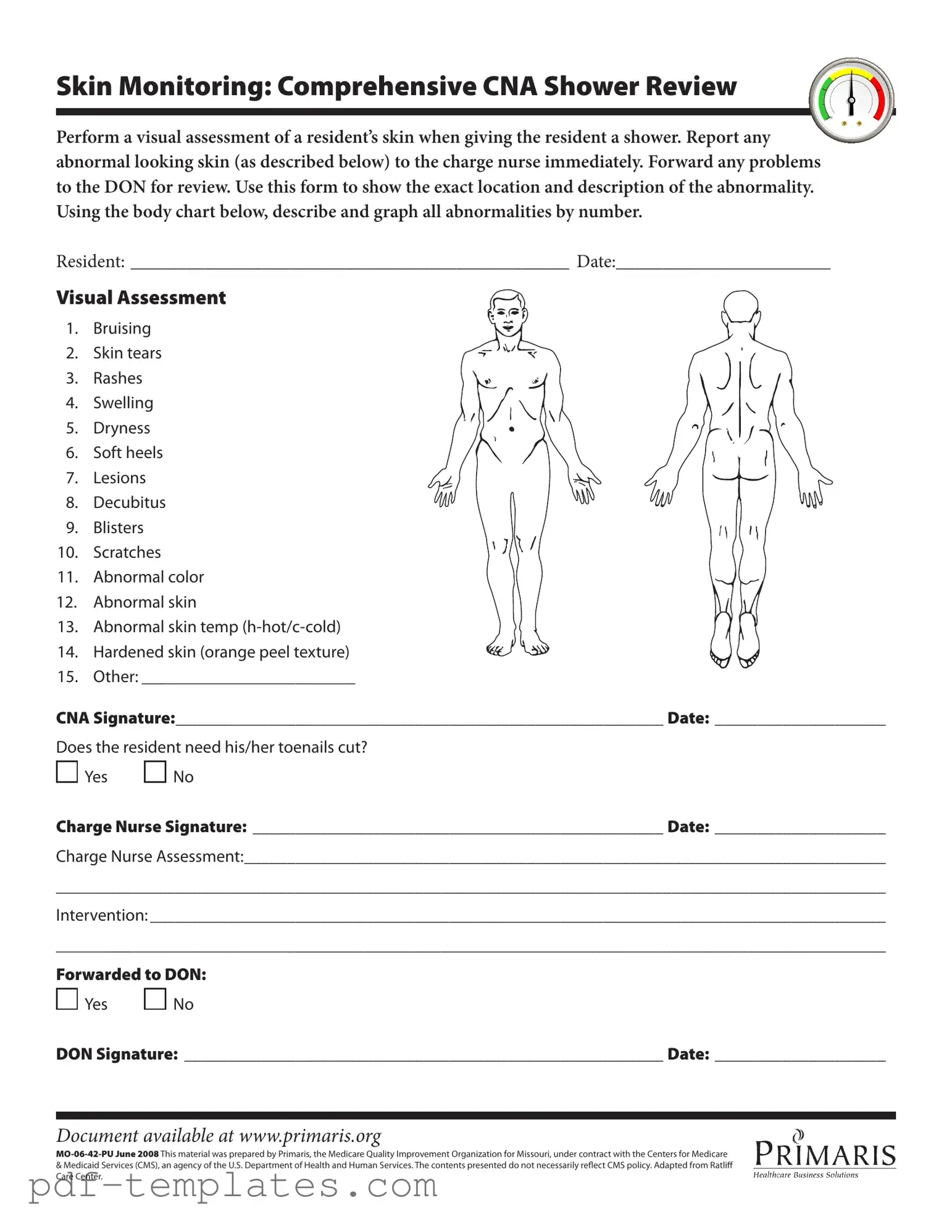The CNA Shower Sheets form shares similarities with the Incident Report form. Both documents are used to document and report unusual occurrences related to a resident's health. The Incident Report focuses on any incidents that may occur during care, while the CNA Shower Sheets specifically address skin abnormalities observed during showers. Both forms require signatures from staff members to verify the information and ensure accountability.
Another similar document is the Skin Assessment Form. This form is designed to monitor a resident’s skin condition over time. Like the CNA Shower Sheets, it includes specific criteria for assessing skin health, such as bruising, rashes, and lesions. Both documents aim to provide a clear and concise record of skin-related observations, helping to ensure timely interventions when necessary.
The Care Plan is also comparable to the CNA Shower Sheets. Care Plans outline the overall approach to a resident's care, including specific interventions for skin issues. While the CNA Shower Sheets focus on immediate observations during showers, the Care Plan provides a broader context for ongoing care, ensuring that skin monitoring is integrated into the resident's overall health strategy.
Understanding the significance of proper documentation in healthcare, it is essential to have forms that serve distinct purposes while ensuring comprehensive care. For instance, the https://formcalifornia.com/ provides a useful framework for designating financial decision-making powers, similar to how various forms in the healthcare sector address specific monitoring and reporting needs.
Similarly, the Daily Progress Notes serve a related purpose. These notes are used to track a resident’s condition and any changes that occur throughout the day. Just as the CNA Shower Sheets document specific skin assessments, Daily Progress Notes capture a variety of health observations, allowing for a comprehensive view of the resident's well-being.
The Wound Care Assessment form is another document that aligns closely with the CNA Shower Sheets. This form is specifically designed to evaluate and document wounds, including their size, appearance, and healing progress. Both forms emphasize the importance of visual assessments and require detailed descriptions to ensure proper care and follow-up.
The Medication Administration Record (MAR) also shares similarities. While the MAR focuses on the medications administered to a resident, it often includes notes on any side effects or reactions observed during administration. Like the CNA Shower Sheets, the MAR is crucial for maintaining accurate records and ensuring that any health changes are documented and addressed promptly.
The Resident Assessment Instrument (RAI) is another comparable document. The RAI is used to evaluate a resident's overall health and care needs, including skin assessments. While the CNA Shower Sheets provide a snapshot of skin condition during showers, the RAI offers a more comprehensive evaluation, helping to inform care strategies and interventions.
Lastly, the Quality Assurance and Performance Improvement (QAPI) plan is relevant. This document outlines the processes for monitoring and improving care quality within a facility. Like the CNA Shower Sheets, the QAPI plan emphasizes the importance of identifying and addressing issues related to resident care, including skin health, to enhance overall quality and safety in the care environment.
